Home coffee bean grinding is a fun way to become more engaged in the brewing process. It gives you more exact brewing control, and we all know that the best coffee comes from freshly brewed beans.
The best single-origin whole beans must be handled with care if you want to get the best possible product (we only source specialty-grade coffee). After grinding, many of the volatile fragrance and taste elements that make single-origin coffee so distinctive and intriguing start to rapidly go away. To guarantee that all of your coffee’s natural tastes and fragrances make it into the cup for great-tasting coffee, grind your beans right before brewing.
Plus, for sheer sensory pleasure, the experience is second to none. Your kitchen will be filled with the rich aroma of a cafeteria. So let’s see how a coffee grinder can seriously improve your coffee routine
Options besides a coffee grinder
Is a coffee grinder really necessary? Technically no. With some simple chilling techniques, you can capture the enticing scent of freshly ground coffee. At the most basic end of the scale, you can use a marble rolling pin or a mortar to grind the beans, both of which are time-consuming but rewarding processes. Of course, a coarse and often uneven grind will result from this.
The coffee beans can grind using a blender or food processor as well. To prevent the beans’ oils from overheating, pulse the beans regularly rather than leaving the machine running.
You may enjoy the scent of freshly ground coffee with these various ways of coffee grinding. The key to making a decent cup of coffee with a consistent flavor extraction is to ground the beans to a precise and uniform size, which is challenging to do without the right grinder.
Getting serious about coffee grounds
These alternative coffee grinding methods will probably only serve to introduce you to the joys of freshly ground beans, making you decide that you really want a coffee grinder.
Here are some things to think about when you buy a coffee grinder, as well as some advice on how to get the most out of it and keep it in good condition.
How to find the ideal coffee grinder for you
There are many different pricing ranges and levels of quality for coffee grinders. The budding coffee connoisseur might not want to invest extra money at first. But still, choosing coffee grinders might often ultimately depend on freshness simply.
Types of coffee grinders
Coffee grinders come in a variety of designs. Blade vs. burr grinders and manual vs. electric coffee grinders are the key differences. Here are our top five picks.
Electric coffee grinders vs. Manual coffee grinders
For the convenience of usage, nothing tops an electric coffee grinder. An electric grinder works best if you want to grind enough whole beans for numerous cups of coffee at once and use a drip coffee maker.
But there are some amazing benefits of using a hand grinder. A manual coffee grinder takes a minute or two to use, which is best for smaller amounts. But that process is fun and satisfying. If you like a contemplative morning coffee routine, it’s also a lot quieter than an electric coffee grinder. These work well in compact kitchens with little counter space. The best part is that a manual grinder may be a reasonably priced and portable choice.
One of our favorite grinders, the JavaPresse Manual Coffee Grinder with a Conical Burr Mill, can fit inside an Aeropress Espresso and Coffee Maker. You can brew delicious coffee anywhere with this portable, manual setup.
Another option for a manual coffee grinder with a little larger capacity is the “Skerton Pro” by Hario, which includes a ceramics grinder and is another option for manual coffee grinders.
A manual coffee grinder can be a great way to get the precision of a burr mill at a very affordable price.
Blade mills vs. Conical Burr Mills
Whole beans are spun in stainless steel blade grinders until the fragments are reduced in size. On average, the number of coffee beans turned will result in a finer ground coffee. The main objection of the blade grinder is that it produces uneven coffee in your morning cup because of uneven coffee beans.

Blade grinders have the benefit of often just requiring a little investment. A blade grinder, such as the Krups F203 Electric Spice Grinder Coffee Grinder, may also function as a spice grinder. Regular and thorough cleaning is crucial if you also grind spices in your coffee grinder since some of the fragrant oils from the spices might alter the flavor of your ground coffee.
Coffee lovers often discount the blade grinder, because those who want to control all aspects of the brewing process find a high-end precision burr grinder, with multiple grind settings, to be a game changer. To regulate the brewing process and ensure great coffee, an automatic burr grinder ensures a consistent grind.
Strawberry mills to consider
The Baratza Encore Conical Burr Coffee Grinder’s 40 grind settings are one of its best features, in our opinion. With a range from extremely fine to coarse, it’s a terrific option for coffee aficionados who possess an espresso machine and like searching for the ideal cold brew.
Baratza Virtuoso+ Conical Burr Coffee Grinder is another option if you really want to splurge. Like the more affordable Baratza Encore, which also offers 40 grind sizes, the Virtuoso+ also boasts a digital timer for improved accuracy, great grind consistency, and faster speed. You may also use the timer to calculate the precise amount of coffee you need to prepare; after that, all it takes is a simple button press each morning.
Even burr coffee grinders with a limited range of settings may produce excellent results at a lower cost. One of the 15 settings on this Ariette DeLonghi electric coffee grinder may be used with an espresso machine. The Capresso 560.01 Infinity Conical Burr Grinder has 16 settings, is user-friendly, and is reasonably priced. Another choice with 15 settings and a price under $100 is the OXO BREW Conical Burr Coffee Grinder.
With a burr grinder, you can control the grind size precisely, and the output will be even and consistent, which is crucial for brewing the perfect cup of coffee. Size does important with coffee beans.
In addition to consistency, burr grinders offer precision that is sometimes surprising. They can be adjusted to produce a wide range of grind sizes, so you can experiment with the extraction process and hone your brewing skills.
Special coffee grinders for espresso consumers
Espresso consumers are aware that a fine grind may make the difference between a good espresso and one that is exceptional, with a particular depth of flavor and a lovely head of crema.
Although most of the coffee grinders have a fine grind setting, they may not be built with the serious espresso lover in view, who will really value the fine grind precision these alternatives offer.
The Baratza Sette 270 is the best espresso maker for connoisseurs. In addition to the 30 settings, there are 9 micro-adjustments to precisely fine-tune the espresso.
The standard Baratza Sette 30 model contains an espresso-specific burr grinding mechanism with settings that are also appropriate for an AeroPress. It is a feature-rich, cost-effective modification for a blade grinder.
The chic Nuova Simonelli Grinta enables micrometric grind control for incredibly precise grinding. Up to 8 pounds of grain may be ground in an hour. Although it might be more than you need for home use, the home barista can benefit greatly from that level of power.
A fine coffee grinder: control the extraction process.
The method of extraction is how tastes are drawn out of ground coffee. A coffee’s flavor profile is imbalanced and can even be hot and sour when there is insufficient flavor extraction from the bean. Too many flavor molecules have been removed from over-extracted coffee, tipping the balance in favor of bitterness and heaviness.
A key element in the extraction process is grind size. In general, the surface area increases with the coffee ground size. Increased surface area results in a quicker and more thorough extraction.
When you experiment with different brewing methods, like French press, cold brew, pressure coffee, drip coffee, and even espresso, you’ll find that each method has its optimal grind size.
The coffee grinds are immersed in the water during immersion extraction techniques like French press coffee and cold brew in cold brew. The coarse grind ensures that water can flow freely around the grounds to extract flavor and prevent longer contact with water from causing over-extraction.
How to effectively use the coffee grinder
Whatever technique you use, be sure to precisely calculate the number of beans needed to make the desired amount of coffee. With whole grains, you can use a measuring spoon. Or, you may spend money on a scale like the Coffee Gator Digital Scale with Built-in Timer.
It’s crucial to take your time while using a food processor, blender, or chopsticks. Choose the grind that will work best for your brewing technique. After checking the size of the beans, pulse the whole beans once more. Repeat the procedure as necessary to reach the grind size you want, taking care not to let the grinds become too hot.
Just change the burr size if you’re using a burr grinder. Since grind size has such a significant impact on extraction, you may even wish to keep track of the outcomes of your infusions using various grind sizes as you perfect your brewing technique.
Grind a few beans to test the setting if you’re using a manual grinder. The premeasured beans can then be modified and ground.
Cleaning and maintenance of the coffee grinder
Cleaning your coffee grinder is crucial to maintain it in good shape and to provide dependably fresh-tasting coffee, even if you just use it to grind coffee.
The essential oils of whole grains are released during grinding. The burs in the grinding chamber, the bean hopper, and the area where the newly ground coffee collects are all coated with these oils and tiny coffee particles.
Coffee oils have a tendency to build up and become sticky. These oils, coffee grounds, and fine coffee dust may clog your machine, rendering it dysfunctional and potentially breaking parts. Your upcoming batches of freshly ground whole beans may lose flavor if oils and coffee particles grow rancid.
Daily maintenance
The key is being consistent and vigilant. The hopper and crushing chamber may be effectively cleaned every day or even once a week by placing a soft brush next to your crusher.
To remove any dust or coffee grounds, you may also clean the hopper and grinding chamber with a paper towel or soft cloth. Always disconnect the grinder before cleaning it for safety’s sake.
Deep cleaning
A thorough cleaning maintains a home mincer in peak shape and might be a major investment. To remove dirt and grease, one technique is to mill rice, but as simple and inexpensive as that sounds, it may not always be the best choice. Rice beans can be harder than coffee beans, which can stress the burs and the engine. Rice can also leave residual starch dust, which can build up over time and cause problems.
Granules made of food-grade materials, such as Urnex Grindz Professional Coffee Grinder Cleaning Tablets, work wonders. To make sure that no pod particles are left in the coffee grinder, you may put a scoop of pods through it once or twice a month, followed by a few whole beans.
Moreover, you may do a gratifying deep cleaning once a month. Start by reducing the grinder’s power. By rotating and removing the collar, you can often remove the outside burrs from coffee grinders.
Air is a great first step in getting the burrs out. You can use a can of compressed air like the one used to clean a keyboard.
The outer and inner burs, the grind reservoir, and the chute may all be cleaned with a soft toothbrush or wooden toothpick once you’ve completed the initial stage. To get rid of any oil residue, use a soft cloth to clean the grind chamber and chute.
Also, keep in mind that water is no friend to sensitive strawberries. Always use a dry cloth.
The satisfaction of making your own coffee
If you’re like many L lovers, you like to get the most out of the coffee experience, from finding your favorite beans to trying out different brewing methods. When grinding beans at home, experimenting with grind sizes helps bring out all the nuances and aromas in your coffee.

If you’re like many coffee drinkers, you like to make the most of the coffee experience, from selecting your preferred beans to experimenting with various brewing techniques. When grinding beans at home, playing with grind sizes helps bring out all the subtleties and smells in your coffee.
If you like to travel in these links I have some proposals that may interest you.
Frequently Asked Questions
Why is a grinder so important for coffee?
A quality grinder keeps the beans cold while being ground, prevents the ground coffee from clumping, and aids in distributing the coffee in the basket evenly.
Does a good coffee grinder really make a difference?
Your coffee experience will be completely changed from the inside out by a fantastic grinder. Your coffee will taste better and have more flavor. You’ll be able to choose the taste and intensity of your coffee. You’ll be able to make coffee that can compete with the best coffee shop.
What is the main purpose of grinders?
The cutting, grinding, deburring, finishing, and polishing of metal may all be done with the help of an angle grinder, a portable power tool. The most popular models of angle grinder tools are electrically driven, either corded or battery-operated.
Why is using a grinder better?
Simply enough, grinding your marijuana will make it considerably simpler to smoke or vape. Also, you’ll discover that grinding cannabis will make it more convenient to carry and more fun to consume. Due to its greater consistency, ground weed is often less bitter.


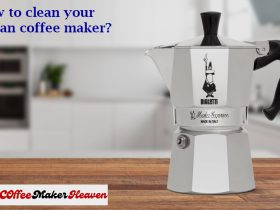
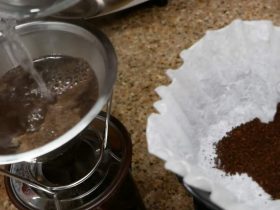
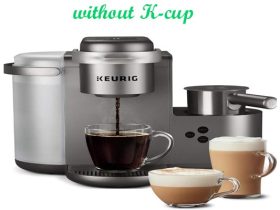
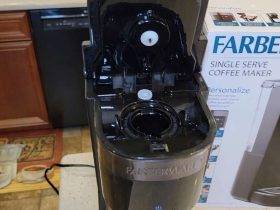



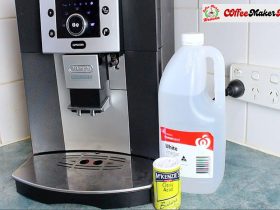

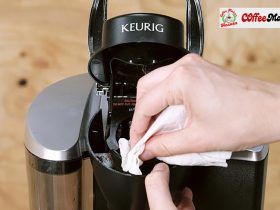
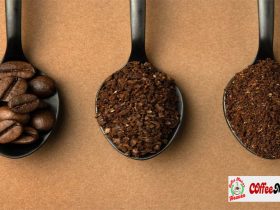

Leave a Reply